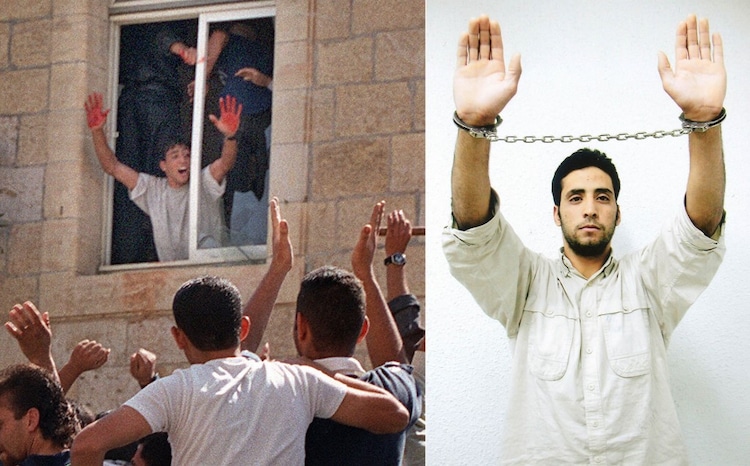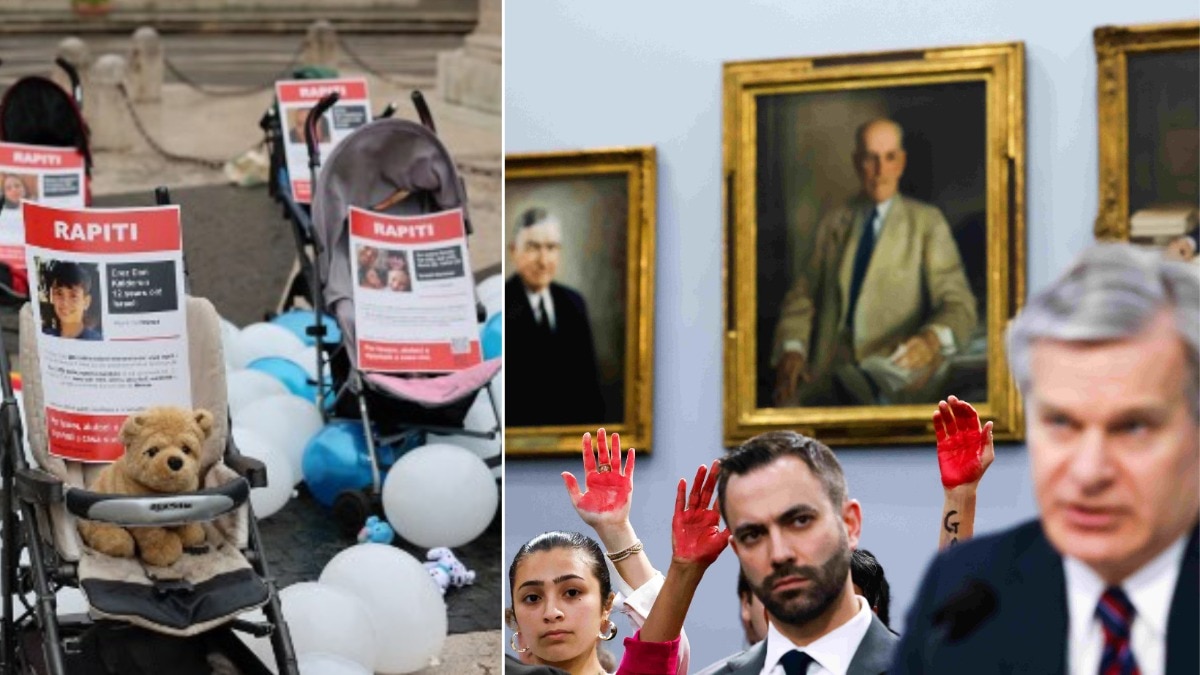2024-10-05 08:40:23
The olive tree, which grows for hundreds, even a thousand years, has evolved into a symbol of resilience in the strife-torn Middle East. This is a region that has laid special emphasis on symbols, which is evident from the Egyptian Ankh, the Star of David and the palm tree. As in life and prosperity, the death and devastation in the Israel-Hamas war have given rise to symbols, and new meanings to old ones. Be it empty strollers, red-painted hands, Palestinian keys or blood-stained trousers.
The Middle East, a region perennially in the doldrums, was thrown into outright chaos as Hamas fighters led a massacre in Israel on October 7 last year. Israeli counter-strikes targeting Hamas turned Gaza areas into rubble. Over 41,000 people have been killed in the year-long conflict, whose flames have been fanned by Hezbollah in Lebanon, Houthis in Yemen and the government of Iran.
In the fight for existence and regional dominance, it is the poor civilians who have become a casualty of the war. In a tragedy of such proportions, where deaths get dehumanised as numbers, it is often the symbolism that reminds us that all those in the throes of agony are people like us.
EMPTY STROLLERS AND 1,400 PAIRS OF CHILDREN’S SHOES
Among the hundreds of people that Hamas terrorists killed, 38 were children. Forty-two children were also kidnapped and taken to Gaza.
On October 22, 15 days after the attack, Israel placed empty strollers outside the British Parliament in London as a reminder of the babies held hostage by Hamas.
The symbolism wasn’t lost. Instead of the babies in them crying, there were the empty strollers that were wailing.
Within days of the October 7 attack, Israel started bombing Gaza. An Oxfam report, released on September 30, says 11,000 children have been killed in the Israeli offensive in the last 12 months.
In March, around 14,000 pairs of children’s shoes were placed in a public square in Utrecht, a city in the Netherlands, to symbolise the huge tragedy.
Images of small bodies wrapped in shrouds and of emaciated children in Gaza show how kids continue to suffer because of abundant Israeli bombs and lack of food.
THE PALESTINIAN KEY: A HOPE TO RETURN HOME
As Israel went after Hamas in Gaza, people had to flee to safer areas as their settlements were bombed.
The Palestinian key became a big symbol of the displacement.
People turned refugees in the bombing are holding on to the keys of their homes, which might have been turned into rubble, as their right to return.
This is a tradition since the mass displacement of 1948, known as the Nakba or catastrophe, when Israel came into being. Most of the current refugees are descendants of the people displaced in 1948.

“History is repeating itself. My grandfather took the key and left with it, hoping to come back, and I took the key hoping to return to my apartment and find it as it was,” Hatem Al-Ferani, who was sheltering in a tent in Rafah with his family, told Reuters.
Even in the Palestinian territory of the West Bank, giant key installations can be seen in various locations, whose meaning is understood by everyone there, according to a Reuters report.
THE KEFFIYEH BECOMES INTERNATIONAL PRO-GAZA FLAG
As images of a bombarding Gaza and its killed people emerged, the call for resistance grew.
As pro-Gaza rallies took place across the world, the keffiyeh, a Beduin headscarf that originated around the 7th Century in the Levant region (now Iraq), became the flag of protesters.
The keffiyeh was mostly worn as protective headgear by shepherds but became a symbol of Palestinian nationalism during the Arab Revolt of 1936–1939 against the Ottomans.

Then it became an identity of the identity-concealing Palestinian terrorists of the 80s, and a fashion accessory globally in the 90s.
In the post-October world, the keffiyeh was used by protesters, including those who set up encampments on American campuses, to depict Palestinian struggles and support the resistance.
RED HANDS: OLD SYMBOL GAINS NEW MEANING
Among the several symbols used to highlight that Israel was killing civilians and had blood on its hands was ‘red hands’.
In April, anti-Israel demonstrators flooded the US Capitol, displaying red-painted palms.
The red hands were meant to depict what Shakespeare symbolised in his play Macbeth.
“What hands are here? Ha, they pluck out mine eyes. Will all great Neptune’s ocean wash this blood clean from my hand?” says Macbeth after murdering Duncan.

However, red hands had assumed a new symbolism in the Israeli-Palestinian conflict, which had to do with the lynching of two Israeli reservists in Ramallah in 2000.
Bayefsky said that there is a “direct line” between the Ramallah Lynching of 2000 and the October 7 attacks.
“A direct line runs between then [Ramallah lynching of 2000] and October 7, and those who continue to excuse, ignore, celebrate or enable the murder, rape and torture of Jews still going on in the hellholes of Hamas-run Gaza,” Anne Bayefsky, president of Human Rights Voices, told Fox News Digital on the red-hand Capitol protests.
Two Israeli Defence Forces (IDF) reservists on October 12, 2000, strayed into the Palestinian territory of Ramallah. They were seized by Palestinian Authority police and taken to a police station.

A huge mob, baying for Israeli blood, overran the police station, lynched and stabbed the two Israelis. Their bodies were mutilated and dismembered.
Aziz Salha, who was part of the mob and stabbed one of the soldiers, went to the window to showcase his blood-stained hands to the crowd below. That picture remains ingrained in people’s memory and those murderous red hands is what Jews refer to.
BLOOD-STAINED TROUSERS AND BLOOD AFTER PAGER BLASTS
As Hamas terrorists went on with their rampage, they did not just kill, but sexually assaulted dozens of Israeli women.
Some of the images of women taken hostage had the ghastly sight of trousers bloodied around the groin area, which suggested gang-rape.
Blood-stained trousers became a symbol of sexual assault and sufferings of women in the conflict.

However, people tend to see newer meanings in symbols.
Thousands of pagers by Hezbollah members were detonated by Israel on September 17.
Hezbollah, like Hamas, is a proxy of Iran and had fired over 8,000 rockets into Israel since October 7.
Dozens of those exploding pagers were in the front pockets of the Hezbollah men, and left them crippled and bloodied in the groin area. People were quick to see poetic justice, and bloody trousers gained new symbolism.
As the conflict, which began between Israel and Hamas, enters its second year and becomes a regional war, there are several symbols that remind us of death and devastation. The biggest victims of the brutality of war are the millions of children and women. The best symbols that the Middle East needs now are the age-old olive branches and white doves.
symbol of war, symbol of war and peace, palestinian keffiyeh, palestinian keffiyeh meaning, palestinian key symbol, palestinian key symbol meaning, blood stained hands, blood stained hands meaning, blood stained trousers, what is special about october 7th, what is special about october 7, olive branch meaning,
Source link
![]()
